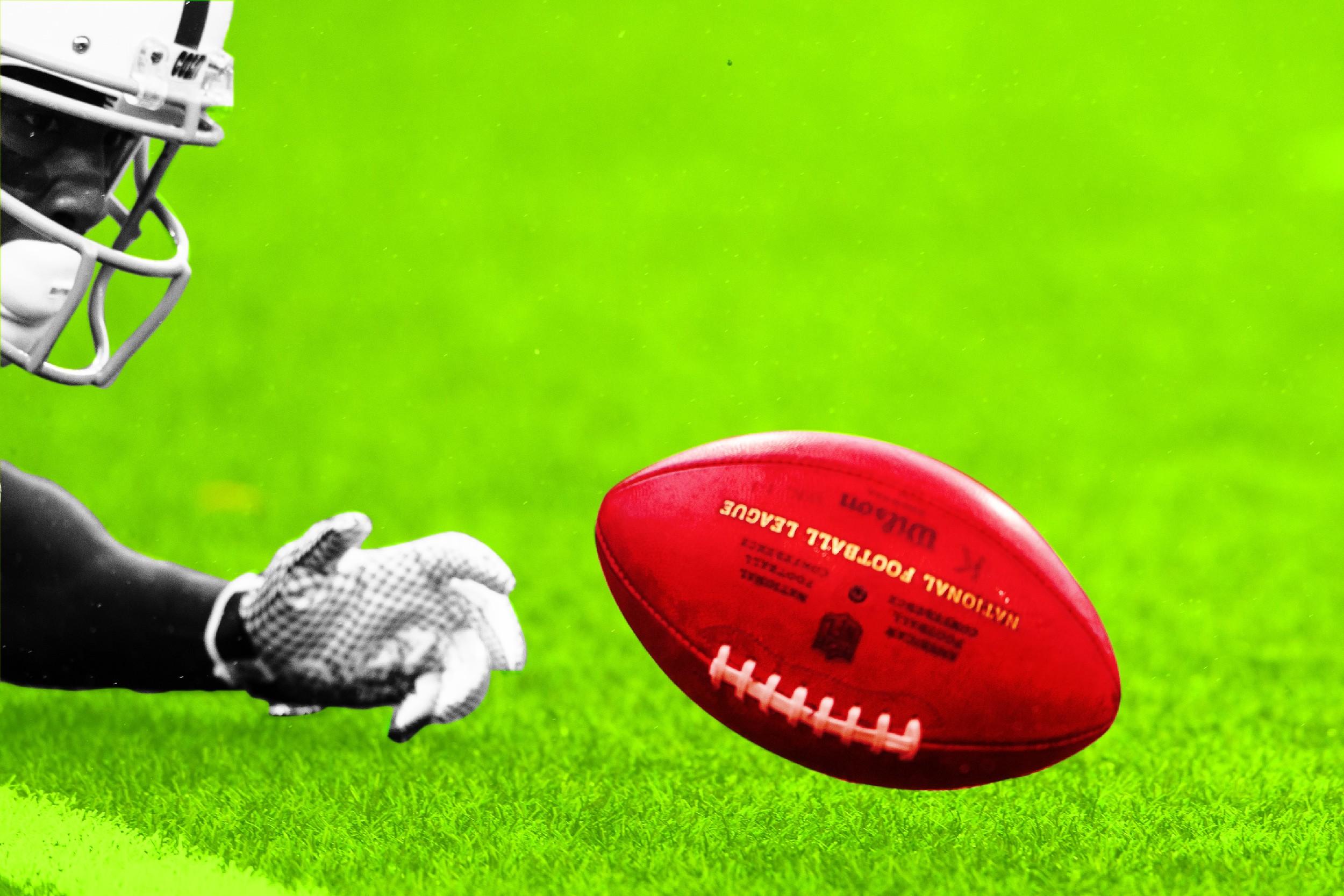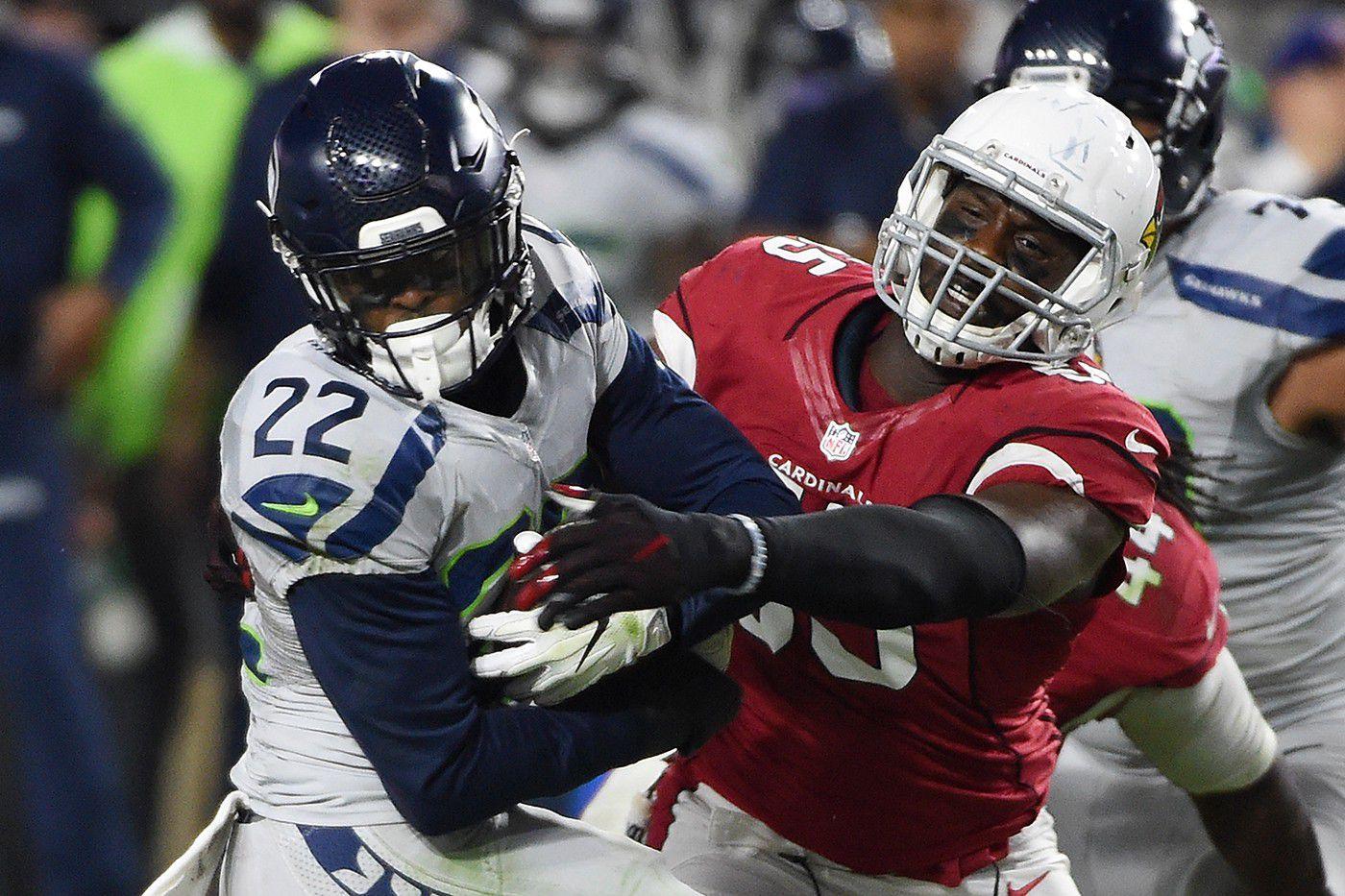
There have been plenty of awful games in the NFL this season, but bad football reached its nadir this past week. Despite what looked to be a great slate — including Patriots-Steelers, Texans-Broncos, Eagles-Vikings, Chargers-Falcons, and Seahawks-Cardinals — we had only one truly enjoyable game: San Diego’s 33–30 overtime win over Atlanta. Anyone who witnessed the five-turnovers-in-the-first-quarter-alone Eagles-Vikings game immediately regretted it, and football doesn’t get much worse than Brock Osweiler throwing for 131 yards on 41 pass attempts for an average of 3.2 yards per attempt. The Seahawks-Cardinals game on Sunday Night Football, a matchup between a couple of preseason Super Bowl favorites, was a 75-minute slog that ended in a 6–6 tie.
TV ratings are down, and the NFL has suddenly turned into the live version of Hollywood: You have to sift through piles of mediocre, mass-produced horrors to find anything really worth watching.
There are plenty of reasons why the football just hasn’t been as good this season. As Kevin Clark wrote in early September, new limits on rookie contracts mean that teams are building out the majority of their rosters with young players on cheap initial deals while leaving the league’s middle class — the higher-paid but more fundamentally sound, experienced role-player veterans — out in the cold. It also doesn’t help that the college game isn’t preparing players for the NFL’s style of football: The nearly ubiquitous spread system doesn’t teach quarterbacks to drop back, read defenses, and go through their progressions; the offensive linemen don’t operate from three-point stances; and receivers play with limited route trees. Plus, the current collective bargaining agreement, instituted in 2011, severely limits the amount of on-field practice time each team gets, so there are simply fewer reps available to players. With so many teams depending on transient, inexperienced, and unprepared rosters, there are no dominant teams.
Of course, none of these issues is brand new; it’s just taken a few seasons for all of them to come to a head. But while it seems pretty clear that we don’t like the current version of football, even when we do get good football, it’s not necessarily the kind we want to watch.

Despite the absurdity of the Seahawks and Cardinals both missing potentially game-winning chip shots as overtime ran down, some football purists were quick to praise the game for its incredible defensive performances — and they weren’t wrong. The stars on that side of the ball, like Earl Thomas, Bobby Wagner, Chandler Jones, Deone Bucannon, and Cliff Avril, stole the spotlight and completely dominated from start to finish. But if that truly was great football, a defensive slugfest in the tradition of 2000s-era AFC North grudge matches between the Steelers and Ravens, why was it so incredibly painful to watch? In the aftermath, Rodger Sherman immediately wrote about how literally nobody won. And the overwhelming reaction on Twitter was to bemoan the worst four quarters in NFL history and the most impossibly-contrived, M. Night Shyamalan–style plot-twist ending of our time.
Do we actually love defensive slugfests, then? Or are we just supposed to love defensive slugfests, even though they, in fact, suck?

If we’re being honest with ourselves, most of us don’t really want to see a running back take a handoff and immediately run into his offensive lineman’s ass. It’s not all that exciting to see a quarterback struggle his way to four or five straight three-and-outs, leaving us to suffer through commercial breaks, punts, more three-and-outs, then more commercial breaks. Great defensive football certainly has its virtues — the way that J.J. Watt and Aaron Donald rush the quarterback is an art, and seeing Kam Chancellor take over a game from the safety position is awe-inspiring — but all the stops and starts can also drag down the broadcast to the point that it’s hard to stay engaged.
This year, because of a lack of balance in almost every good team — almost every squad has an easily exploitable fatal flaw — the lack of flow in defense-dominated games feels even more pronounced. It was hard to call last week’s Eagles-Vikings game a great defensive battle since neither team has a competent pair of offensive tackles to slow the pass rush and protect the quarterback. Two great defenses being present on the field wasn’t enough to make it a great defensive game; both offenses were inept. Mistakes, miscues, and unforced errors overshadowed the best defensive stops on either side, and eventually those defensive stops, well, stopped being all that impressive.
I break down All-22 tape every weekend. I get fired up about blocking schemes and zone blitzes. And even I have to admit it: I prefer watching games in which the defense isn’t significantly better than the offense.

Here’s the thing: Scoring is fun. Scoring is exciting. Seeing Julio Jones catch a pass 40 yards downfield, break a few tackles, and run it in for a touchdown gets your adrenaline pumping, and it’ll stay pumping if Antonio Brown or Odell Beckham Jr. does something just as ridiculous on the next possession. There’s a reason the NFL has continually changed rules to favor more offense. The quarterback is now afforded unprecedented protection. Cornerbacks can barely touch a receiver without drawing a flag. The league, and in reality, the majority of fans, doesn’t want defenses to be too good.
With somewhere around 75 million people playing fantasy football, the more running, passing, and scoring we get, the better. And it doesn’t hurt that the NFL’s RedZone channel has its most utility when offenses — not defenses — are making things happen. Even if we forget about fantasy, a game with lots of points just looks better than a suffocating defensive battle. A smooth, crisp, well-executed offense is pleasing to the eye: a receiver catching the ball in stride to toe-touch inbounds at the sideline, a running back juking the hell out of a defender to sprint away to daylight. Would you rather see that or a quarterback take a coverage sack because none of his receivers can get open?
Of course, things can go too far, and the law of diminishing returns takes effect. Scoring can’t be too easy. There isn’t a lot of fun in watching a quarterback camp out in the pocket to make a throw downfield to a wide-open receiver either.
So where’s the happy medium? Conveniently, two of the most recent Super Bowl games serve as excellent examples. In Baltimore’s 34–31 Super Bowl XLVII victory over San Francisco, the Ravens jumped out to a big halftime lead before the 49ers fought their way back into it. The game had plenty of points, a great comeback, and a tense fourth-quarter drive by the Niners, but also an incredible defensive stand by the Ravens.
Two years later, the Patriots and Seahawks played another instant classic. Or at least that’s what people tell me; I don’t know what happened … OK, fine: New England won, 28–24. There were huge offensive plays, big defensive stops, lead swings, superstar quarterbacks throwing dimes, superstar defenders picking off passes, comebacks and goal-line stands. It was the perfect balance of offense and defense — neither was dominant and neither was inept.
Not every game can be a Super Bowl classic, and it’s no surprise that some of the NFL’s best teams produced some of its best games. But what made these games so fun is that there was a give-and-take from both sides of the ball, and no group was especially dominant. So much of the football this year has been terrible, and no one wants that, but we also don’t want it to be perfect.

